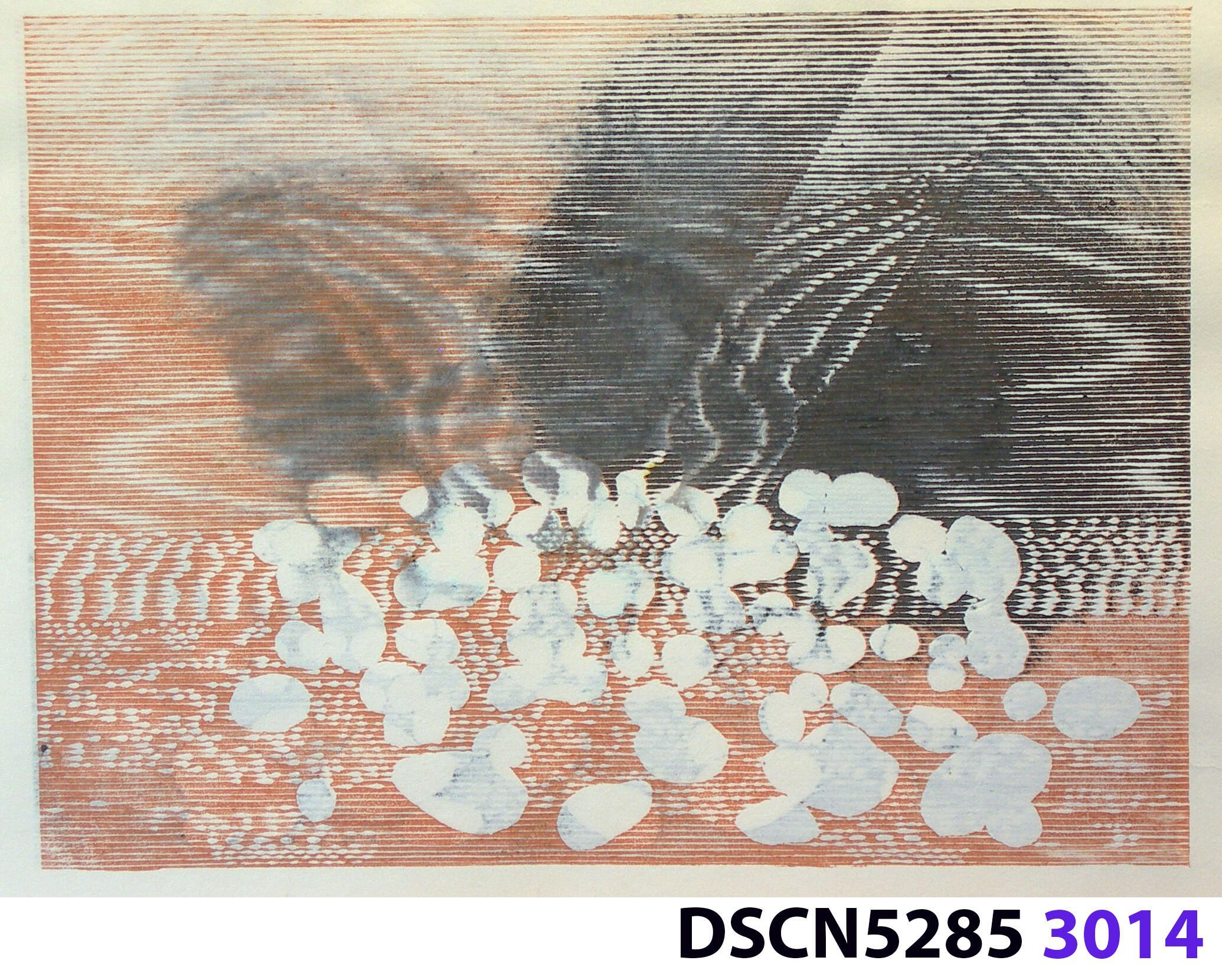Stone Set

Stone Set
As a historical note, artist Bill Ritchie worked briefly at the Munch Museum studying the wood blocks that Edvard Munch cut and printed. Some of his woodcuts, notably "Badende Mann," (Bathing Man) he printed not as replicas or multiples all alike, but with different colors. These are termed monoprints, which means there are blocks which and be used to make almost identical impressions, but for artistic purposes (i.e., enjoyment of the creative artist) but the artist chose instead to make variations. In this print, Stone Set, Bill used an etched zinc plate from the Stone Set series and an under-image to a carved woodblock. Most, if not all, of the etched plates were printed in black, but the woodblock, being that it is printed with water-based colors in the Japanese manner (sosaku hanga) invites spontaneous color changes. The printer only has to dip the brush into a different color on the palette to produce a change. In other, mostly oil-based printing mediums, color changes are not that easy. Munch, for example, had to clean his inking slab and roller each time he wanted to try a different color. It must be mentioned, also, that Bill carved the lines in wood based on his video art. Television in those days was analog technology, with one or three electron beams scanning side-to-side of the picture from top to bottom and back again. The "picture" in Bill's video for this woodcut was not of the the real world, but the lines were instead the result of his stopping a videotape on a reel-to-reel videotape player and freezing the scanning at that stop-point. He photographed the TV screen, printed the negatiive, an traced it line-by line onto the woodcut and started carving. Another element to be mentioned is that the woodcut was printed on thin Asian paper (which works best in Japanese woodcut-style printing), let dry, then laminated to the etching in a second printing. The method is called Chine-colle, with water-based paste used to glue the sheets togehter. On close examination, one can tell the black oil-based etching ink is printed over the color, water-based ink.
